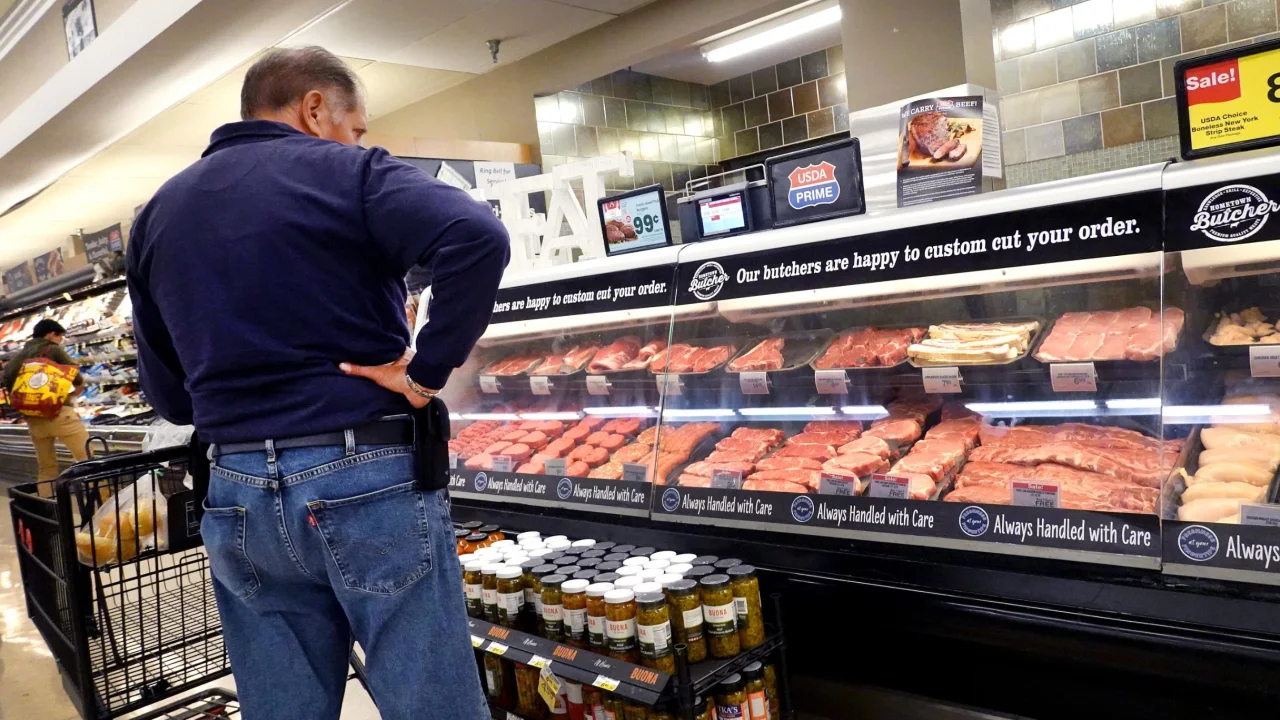Americans felt more pessimistic about the economy in August, following two straight months of growing confidence.
The Conference Board’s Consumer Confidence Index, which gauges Americans’ attitudes towards the economy and job market, fell to a reading of 106.1 in August, down from 114 in July, reversing the improvements made in the summer.
The falling optimism was mostly due to inflation worries, with some concerns about the labor market. Consumers’ expectations of economic conditions in the coming months declined sharply.
“Consumer confidence fell in August 2023, erasing back-to-back increases in June and July,” said Dana Peterson, chief economist at The Conference Board, in a release.
“August’s disappointing headline number reflected dips in both the current conditions and expectations indexes. Write-in responses showed that consumers were once again preoccupied with rising prices in general, and for groceries and gasoline in particular.”
Gas prices have risen in recent weeks and student loan repayments resume in October, which could also weigh on US consumers’ moods. The Labor Day holiday, coupled with Hurricane Idalia’s threat of taking gasoline refinery facilities offline, could further push up gas prices and overall inflation.
The University of Michigan’s consumer survey last week also showed a deterioration in Americans’ attitudes toward the economy in August, though at a more subdued pace, according to a final reading.
Federal Reserve officials have emphasized that long-term inflation expectations remain in check. But if inflation stays stubbornly high for longer than expected, US consumers could get used to what they perceive to be permanently higher prices. That could make it extremely hard for the Fed to bring inflation back down to its stated target of 2%.
A focus on consumer spending
Consumer attitudes are sometimes a bellwether for spending, which accounts for about two-thirds of US economic output. If consumers feel pessimistic for a prolonged period of time, they could possibly pull back, which would reverberate throughout the economy.
Consumer spending slowed throughout the spring after jumping at the beginning of the year, then picked up in the summer. Spending rose in June by 0.5%, a resurgence from the prior four months. In May, spending ticked up by a revised 0.2%.
It’s unclear whether the US consumer’s resilience will persist through the end of the year, though Fed economists said they no longer predict a 2023 recession. Investors expect consumer spending to slow the rest of the year, but not fall off a cliff.
In fact, concerns about the economy have recently evolved to be quite the opposite. Economic growth picked up in the second quarter from the prior three-month period as Americans spent robustly on services, but pulled back on goods purchases.
That surprising strength kept Fed officials on edge in July, when they voted to hike interest rates by a quarter point to their highest level in 22 years, according to minutes from that meeting. That’s because the US economy’s strength might not be consistent with 2% inflation.
Fed Chair Jerome Powell said in his keynote speech at the Kansas City Fed’s annual economic symposium last week that the Fed wants to see “below-trend growth.” He stood firmly by the central bank’s 2% target.
The labor market’s impact
But both the economy and the job market remain on strong footing, and that’s helping to keep inflation elevated.
Plus, the Atlanta Fed estimates GDP will grow at an annualized, seasonally adjusted rate of 5.9% in the third quarter, a sharp acceleration from the second quarter’s 2.4% rate. On Wednesday, the Commerce Department is set to release its second estimate of second-quarter GDP growth.
The Conference Board’s consumer survey is known for capturing attitudes on the job market. Employers continue to hire at a solid pace and wages have finally outpaced inflation, but the broader job market is expected to cool further under the weight of the Fed’s most aggressive rate-hiking campaign in decades. A separate report from the Labor Department showed that job openings fell below 9 million for the first time since March 2021 in July.
“The larger-than-expected drop in job openings in July indicates that consumers are reacting to the shifting labor landscape,” wrote Sam Millette, fixed income strategist for Commonwealth Financial Network, in an analyst note.
US consumers’ mood soured at the end of summer on inflation worries




